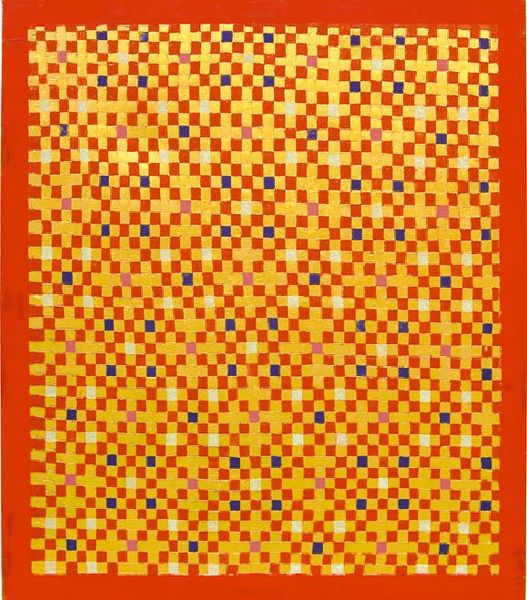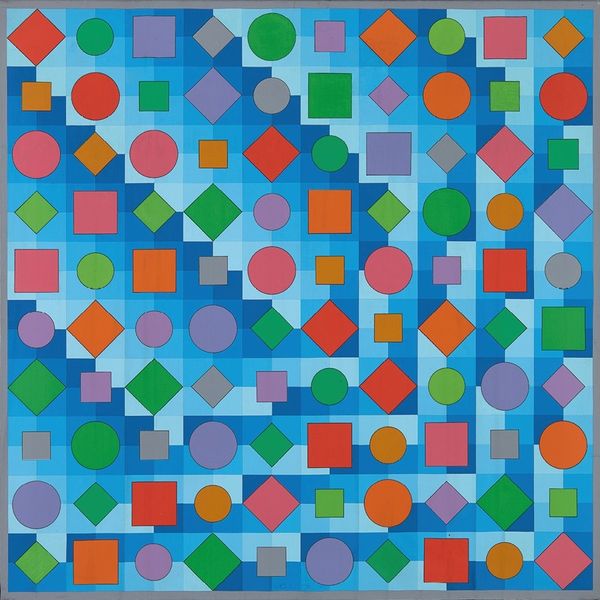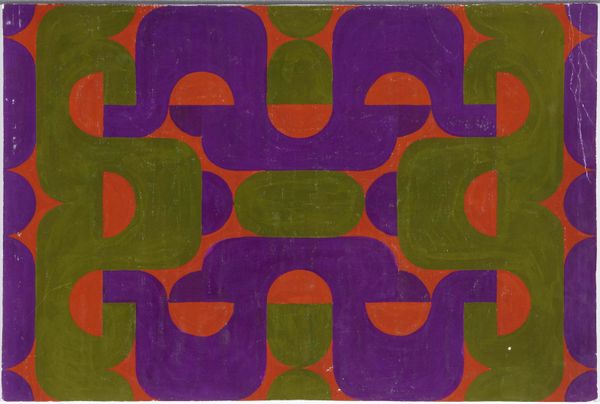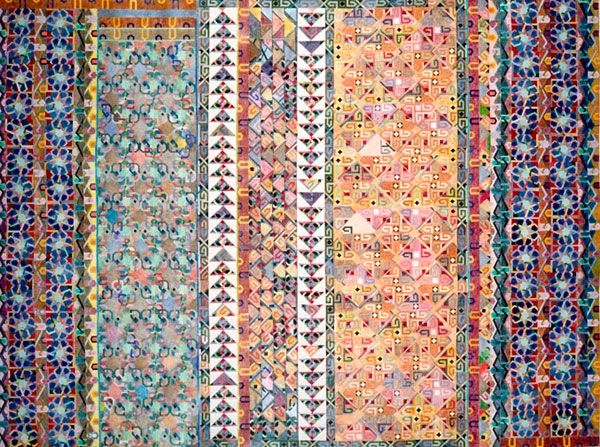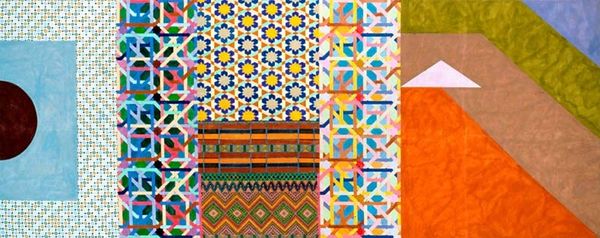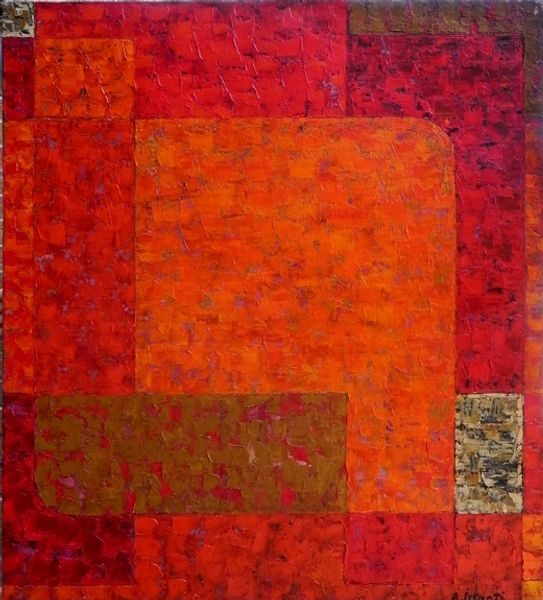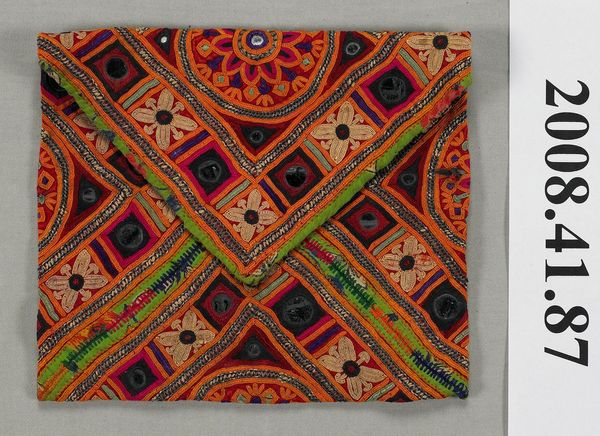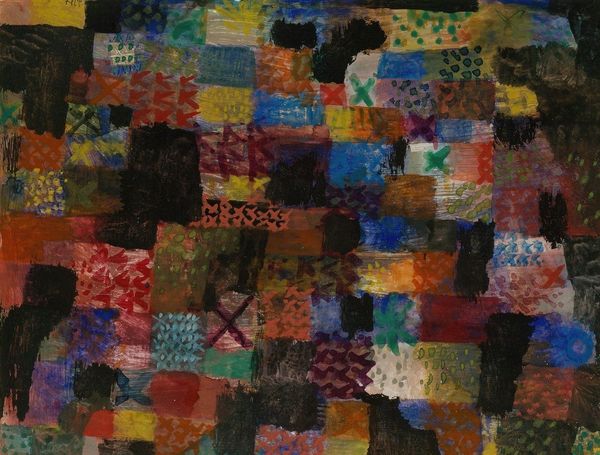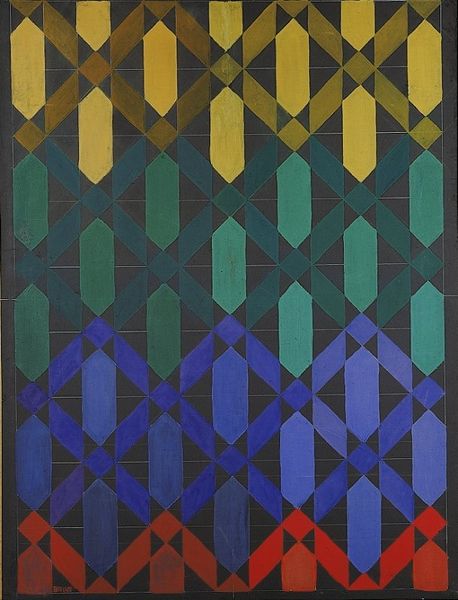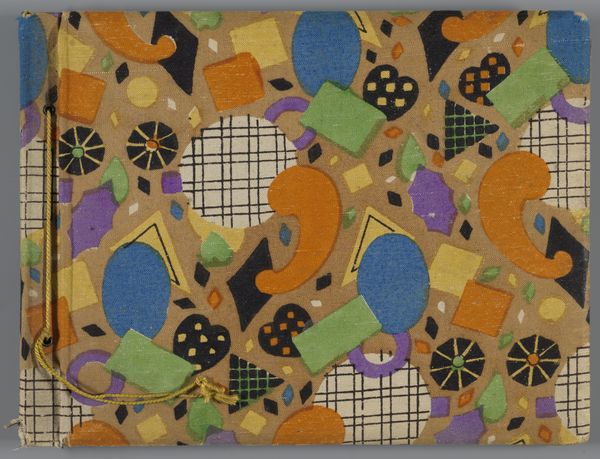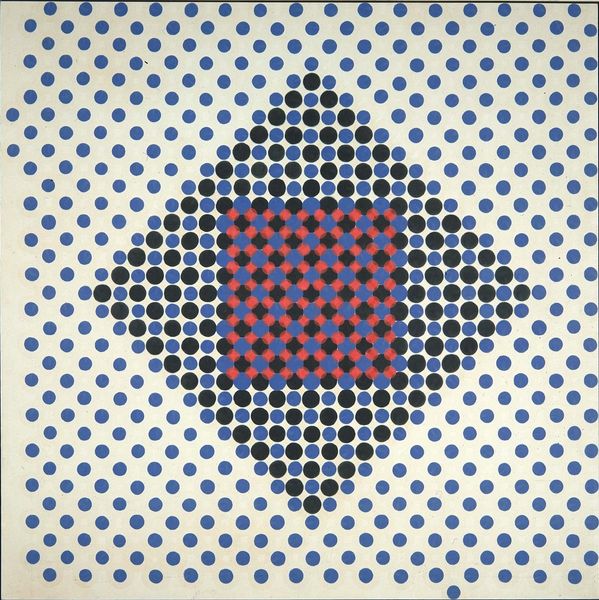
textile
#
pattern-and-decoration
#
pattern
#
textile
#
geometric pattern
#
abstract pattern
#
organic pattern
#
geometric
#
repetition of pattern
#
vertical pattern
#
abstraction
#
line
#
orange
Copyright: Joyce Kozloff,Fair Use
Curator: Hidden Chambers by Joyce Kozloff, created in 1976. It's a vibrant textile piece. I'm struck by its intricate, almost dizzying pattern work. What are your first thoughts? Editor: Well, the textile medium really stands out. And the title makes me wonder about the layered patterns; it's like Kozloff is building up hidden spaces or meanings within the design itself. What do you see in this piece beyond the visual aspect? Curator: I immediately think of the Pattern and Decoration movement, and its challenge to the art world hierarchy. The deliberate embrace of traditionally “feminine” crafts, like quilting or textile design, was a political act. Are we looking at something that directly confronts established male-dominated abstract expressionism by using ‘craft’? Editor: That's a great point. So, the 'low' art of textiles is consciously being elevated? But what would it mean for her to engage textile techniques, in contrast to painting? Curator: Exactly. Think about the labor involved in producing a work like this – the repetitive stitching, the hours of meticulous work. It’s a direct contrast to the often-mythologized image of the abstract expressionist painter, wrestling with their emotions on a canvas. It elevates the social conditions that afford artistic creation, it exposes the role labor takes. Doesn't this open up new questions? Editor: Absolutely. I guess I hadn't really considered the labor aspect of textile art to that degree before. This has highlighted for me the importance of viewing art not just as an object but as a product of specific labor and a specific set of materials. Curator: And the way Kozloff reframes craft turns it from something invisible to something highlighted, challenging norms of consumption. Editor: Right. I never really thought about textile and the social and the cultural impact. It gives a new understanding to how "Pattern and Decoration" goes beyond aesthetics and addresses material and cultural significance. Curator: Precisely! Thinking about the labor and production definitely complicates how we view "Hidden Chambers."
Comments
No comments
Be the first to comment and join the conversation on the ultimate creative platform.

